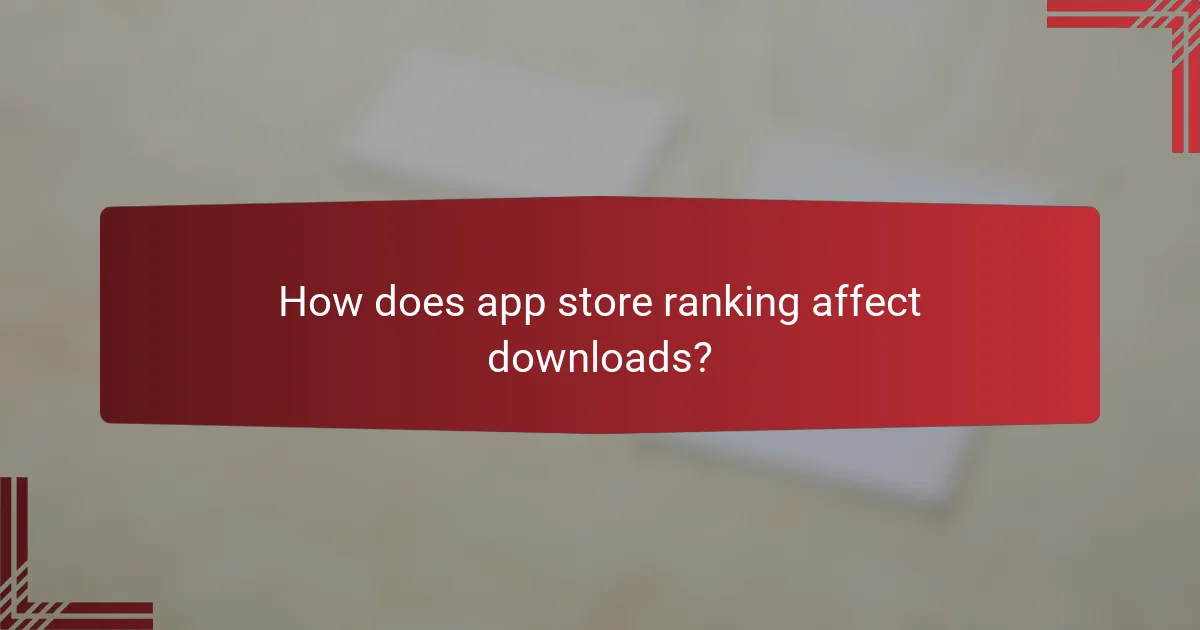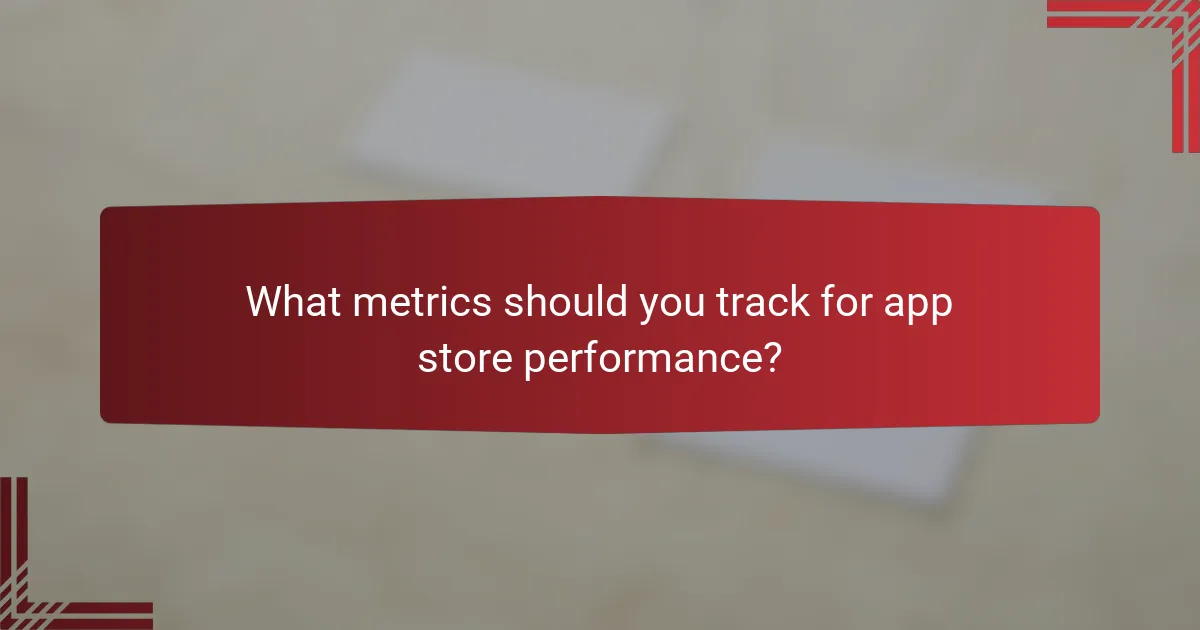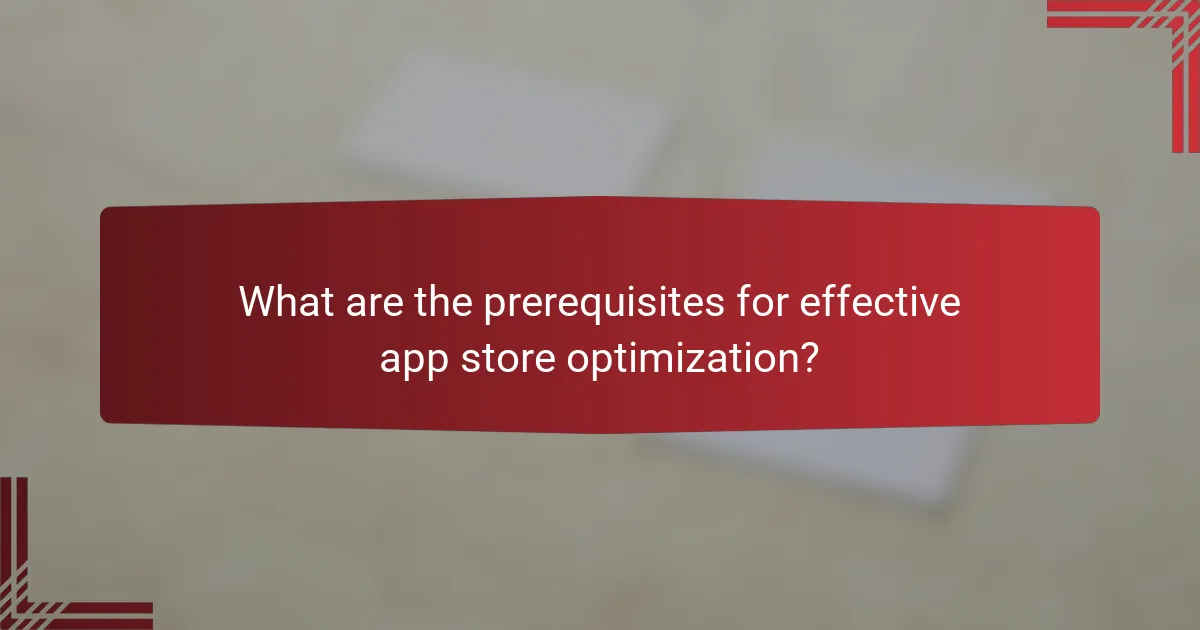Optimizing your app store presence is essential for increasing visibility and driving downloads without overspending. By strategically enhancing your app’s title, keywords, visuals, and user feedback, you can effectively improve its discoverability. Implementing cost-effective strategies allows developers to maximize organic reach and boost rankings, ultimately leading to greater user engagement and increased downloads.

How can you improve your app store visibility in the US?
Improving your app store visibility in the US involves strategic optimization of your app’s title, keywords, visuals, and user feedback. By focusing on these key areas, you can enhance discoverability and attract more downloads without incurring significant costs.
Optimize app title and keywords
Your app title and keywords are crucial for search visibility. Choose a title that clearly reflects your app’s purpose and includes relevant keywords that potential users might search for. Aim for a title length of around 30 characters to ensure it displays well on all devices.
Incorporate 3-5 targeted keywords in your app’s metadata. Use tools like Google Keyword Planner or App Annie to identify popular search terms. Avoid keyword stuffing, as this can lead to penalties and reduced visibility.
Enhance app icon and screenshots
An eye-catching app icon and compelling screenshots can significantly impact user engagement. Design your app icon to be simple yet distinctive, ensuring it stands out in search results. Test different designs to see which resonates best with your target audience.
For screenshots, showcase key features and user benefits. Use captions to highlight what makes your app unique. Aim for 3-5 high-quality screenshots that convey the app’s functionality and appeal, as these can influence download decisions.
Leverage user reviews and ratings
User reviews and ratings play a vital role in app store visibility and credibility. Encourage satisfied users to leave positive feedback, as higher ratings can improve your app’s ranking. Respond to reviews promptly to show that you value user input.
Monitor feedback for common themes or issues. Addressing negative reviews can enhance user satisfaction and improve your app’s overall rating. Consider implementing a feedback prompt within the app to facilitate this process.
Utilize localized descriptions
Localized app descriptions can enhance your visibility in specific markets. Tailor your app’s description to reflect local language, culture, and preferences, which can lead to higher engagement rates. Use professional translation services to ensure accuracy and cultural relevance.
In the US, consider regional variations in language and terminology. For example, using “soda” in some areas versus “pop” in others can make a difference. Localizing your app description can help you connect better with users and improve your app’s appeal.

What are cost-effective strategies for app store optimization?
Cost-effective strategies for app store optimization (ASO) focus on enhancing visibility and user engagement without significant financial investment. By leveraging tools and methods that maximize organic reach, developers can increase downloads and improve rankings efficiently.
Implement ASO tools like App Annie
Using ASO tools such as App Annie can provide valuable insights into app performance and market trends. These tools help track keyword rankings, competitor performance, and user reviews, enabling developers to make informed decisions about their optimization strategies.
Consider starting with a free or low-cost tier of ASO tools to assess their impact on your app’s visibility. Regularly analyze the data to identify which keywords drive traffic and adjust your app’s metadata accordingly.
Focus on organic user acquisition
Organic user acquisition involves attracting users without paid advertising, primarily through effective ASO techniques. This can include optimizing your app title, description, and visuals to appeal to your target audience and improve search rankings.
To enhance organic growth, prioritize high-quality screenshots and engaging app previews that showcase your app’s features. Encourage user reviews and ratings, as positive feedback can significantly influence potential users’ decisions.

How does app store ranking affect downloads?
App store ranking significantly influences download rates, as higher-ranked apps are more likely to be discovered by users. When an app appears at the top of search results or category listings, it attracts more attention, leading to increased downloads.
Higher rankings lead to increased visibility
When your app ranks higher in app store search results, it gains greater visibility among potential users. This visibility is crucial because most users tend to download apps that appear on the first page of search results, often ignoring those that are ranked lower.
To improve your app’s ranking, focus on optimizing your app title, keywords, and description. Regularly updating your app and encouraging user reviews can also positively impact your ranking, as app stores often favor actively maintained apps.
Impact on conversion rates
Higher app store rankings can lead to better conversion rates, meaning a greater percentage of users who view your app will download it. A well-ranked app not only attracts more views but also instills a sense of trust and credibility among users.
To maximize conversion rates, ensure your app’s icon and screenshots are appealing and accurately represent its functionality. Additionally, consider using compelling call-to-action phrases in your app description to encourage downloads. Regularly analyzing user feedback can help you refine these elements for better performance.

What metrics should you track for app store performance?
To optimize your app store presence, focus on key metrics such as download rates and user engagement. These indicators provide insights into how well your app is performing and where improvements can be made.
Monitor download rates
Tracking download rates is essential for understanding your app’s popularity and market reach. This metric helps you identify trends over time, such as spikes during marketing campaigns or seasonal fluctuations.
To effectively monitor download rates, utilize app analytics tools that provide daily, weekly, and monthly data. Aim for a consistent increase in downloads, and set benchmarks based on your category’s average performance.
Consider comparing your download rates against competitors to gauge your app’s standing in the market. If your downloads are stagnating or declining, it may be time to reassess your marketing strategies or app features.
Analyze user engagement metrics
User engagement metrics reveal how actively users interact with your app after downloading it. Key indicators include session length, frequency of use, and retention rates, which can highlight areas for improvement.
Focus on metrics like daily active users (DAU) and monthly active users (MAU) to assess overall engagement. A good retention rate typically falls between 20-30% after the first month, but this can vary by app type.
Utilize in-app surveys or feedback tools to gather qualitative data on user experience. This information can guide updates and feature enhancements that keep users engaged and satisfied.

What are the prerequisites for effective app store optimization?
Effective app store optimization (ASO) requires a clear understanding of your target audience and a thorough analysis of competitor strategies. These prerequisites help you tailor your app’s visibility and appeal, ensuring it stands out in a crowded marketplace.
Understanding target audience
Identifying your target audience is crucial for optimizing your app store presence. Consider demographics such as age, location, and interests, as well as user behavior patterns. This information allows you to craft compelling app descriptions and visuals that resonate with potential users.
Utilize tools like Google Analytics or social media insights to gather data on your audience. Create user personas to visualize their needs and preferences, which can guide your keyword selection and promotional strategies.
Researching competitor strategies
Analyzing competitor strategies is essential for effective ASO. Start by identifying your main competitors and examining their app store listings, including keywords, descriptions, and user reviews. This can reveal gaps in the market and opportunities for differentiation.
Consider using ASO tools like Sensor Tower or App Annie to track competitor performance and keyword rankings. Focus on their strengths and weaknesses, and adapt your approach to capitalize on areas where you can outperform them, such as better visuals or more engaging content.

How can you utilize social media for app promotion?
Utilizing social media for app promotion involves leveraging platforms to reach and engage potential users effectively. By creating targeted content and campaigns, you can enhance visibility and drive downloads without significant financial investment.
Engage users through platforms like Instagram
Instagram is a visually-driven platform ideal for showcasing your app’s features and benefits. Use eye-catching images, short videos, and stories to highlight user experiences and app functionalities. Regularly engaging with followers through comments and direct messages can foster a community around your app.
Consider using Instagram Reels or IGTV for tutorials or behind-the-scenes content, which can attract more viewers. Collaborating with influencers who align with your app’s target audience can also amplify your reach and credibility.
Run targeted ad campaigns on Facebook
Facebook’s advertising platform allows for highly targeted ad campaigns based on user demographics, interests, and behaviors. Start by defining your target audience and setting a budget that aligns with your promotional goals. Ads can be tailored to drive app installs directly from the platform.
Utilize A/B testing to determine which ad creatives and messaging resonate best with your audience. Monitor performance metrics to optimize your campaigns over time, ensuring you maximize your return on investment while keeping costs manageable.

What are common mistakes to avoid in app store optimization?
Common mistakes in app store optimization (ASO) can significantly hinder your app’s visibility and downloads. Avoiding these pitfalls is crucial for maximizing your app’s potential without overspending.
Neglecting keyword research
Failing to conduct thorough keyword research can lead to poor app visibility in search results. Keywords are essential for matching user queries with your app, so invest time in identifying relevant terms that potential users are searching for.
Utilize tools like Google Keyword Planner or App Annie to discover popular keywords in your app’s category. Aim for a mix of high-volume and niche keywords to balance competition and discoverability.
Regularly update your keywords based on trends and user behavior to maintain relevance. A good practice is to review your keyword strategy every few months or after significant app updates.
Ignoring user feedback
Disregarding user feedback can lead to missed opportunities for improvement and user retention. Listening to your users helps you understand their needs and pain points, which is vital for enhancing your app’s performance.
Encourage users to leave reviews and ratings, and actively monitor app store comments. Use this feedback to make informed updates and adjustments, addressing common issues or requests that users highlight.
Consider implementing a feedback loop where you inform users about changes made based on their suggestions. This not only improves your app but also fosters a loyal user base that feels valued and heard.

